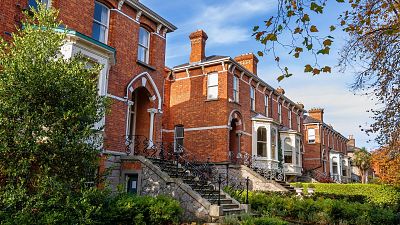Where to find the hidden gems in Dublin

Dubliners are famous for their dark humour, their irreverence and their Guinness. And on a whirlwind weekend sojourn, I got to experience the people and the place firsthand. From the friendly pub landlords and witty shop assistants to the long line of chocolate coloured pints lining the bars – it’s a city with so much character.
You’d never be bored in Dublin, there’s simply too many people to talk to.
Ambling around the city is a joy to behold. The air is fresh, there are parks around every corner and the architecture is Georgian. There are 24 bridges that take you over to the other side of the city, across the River Liffey. It’s like Paris in that way – the relationship between the Left Bank and the Right Bank echo the Southside, the affluent part of Dublin, and the edgier, more modest Northside.
While the majority of my time was spent on the Southside, and therefore most of my recommendations are based there, the Northside is not to be disregarded.
This side of the river is home to some of Dublin’s most exciting food, with a diverse array of cafes and restaurants, as well as tourist attractions like The Irish Emigration Museum (EPIC) and the illustrious Dublin Writers Museum.
My favourite road on the Northside is Henrietta Street, which is filled with grand, red brick houses that date back to the 1720s. Henrietta Street is the most intact collection of early to mid-18th century houses in Ireland. Nowadays, it’s got a creative feel to it, and is home to the studios of several award-winning Irish artists.
But the magic of Dublin also lies in its after hours scene. It’s a city that really comes alive at night.
Out wandering the vibrant streets of Temple Bar and Grafton Street, merriment is everywhere you look. Co-workers are enjoying an after work pint and tend to hang around ‘smirting’ – which I’m told is almost an official term among locals. It’s a mashup of smoking and flirting – apparently something young Dubliners are experts at.
So what are the best things to do, where should you stay, eat, drink, party? Here’s everything you need to know for a more alternative city break.
First of all, what are the COVID restrictions?
Ireland has abolished all COVID-19 entry restrictions from 6 March. That means travellers who plan to enter are no longer subject to tests nor do they have to show proof of vaccination or recovery.
The legal requirement to wear a face covering no longer applies either, as of 28 February.
Although, you should continue to wear a mask on public transport and in healthcare settings.
How do you get around Dublin?
Dublin is a city built for walking which, hailing from London, is a welcome change. It’s not very big at just over 45 square miles in total. But, as the capital, it’s still the most populated city in Ireland – the only one with more than 1 million people.
It doesn’t feel crowded though, which is why walking around is so enjoyable. There are swathes of narrow streets to discover and cycling lanes too.
All around the city there are bike rental docks called DublinBikes – you just need to download an app to access the self service and away you go for the rest of the day.
But if you’d rather opt for public transport, there is always the Luas – an electric tram with two lines, green and red. The name Luas is the Irish word for speed. It’s cheap, cheerful and glides through the city in an environmentally-friendly way.
Finally, there is the DART – if you’re up for a more adventurous day trip. The DART is an electric train that travels from the city centre into the outskirts of Dublin and along the coastline.
